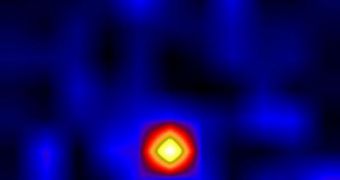For the better part of 50 years, astronomers have been analyzing and studying a binary system they discovered by accident during an early rocket flight. Cygnus X-1 has since become maybe the most studied object in the Universe, and even now experts are learning new thing about it.
The massively-strong X-ray source – the brightest as seen from our planet – is believed to be made up of a blue supergiant star, which orbits closely to a massive black hole. Until now, telling the two apart was nightmare.
Now, astronomers propose the first study in which the distance between the star and the accretion disk around the black hole is established with a certain degree of precision. The blue supergiant is designated as HDE 226868.
Despite being heavily studied, on one really knows how far away Cygnus X-1 is from Earth. The best estimates available indicate 6,000 light-years as the most likely distance. This value was extracted from observations made by the Hipparcos satellite.
The information also revealed that the star is orbiting the black hole at a distance of about 0.2 astronomical units. An AU is the equivalent of the mean distance between Earth and the Sun, or about 93 million miles.
“We present a detailed study of the X-ray dust scattering halo of the black hole candidate based on two Chandra\ HETGS observations. Using 18 different dust models, including one modified by us (dubbed XLNW), we probe the interstellar medium between us and this source,” expert Jingen Xiang says.
“A consistent description of the cloud properties along the line of sight that describes at the same time the halo radial profile, the halo lightcurves, and the column density from source spectroscopy is best achieved with a small subset of these models,” he writes in the new study.
What astronomers were interested in seeing was exactly how far away the two are located from each other, and whether they could still be told apart, Universe Today reports.
“We report a direct and accurate measurement of the distance to the X-ray binary Cygnus X-1, which contains the first black hole to be discovered. The distance of 1.86(-0.11,+0.12) kpc was obtained from a trigonometric parallax measurement using the Very Long Baseline Array,” says Mark J. Reid, et al.
Future studies will seek to refine these measurements even further, researchers say, giving us a more insightful glimpse into the way black holes function inside binary systems.

 14 DAY TRIAL //
14 DAY TRIAL //